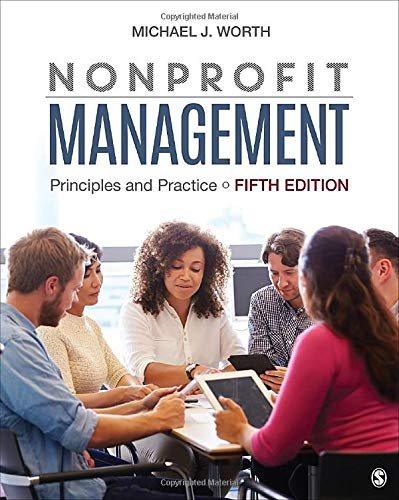Geoffrey Canada, who served as president and CEO of Harlem Children's Zone (HCZ) from 1990 to 2014,
Question:
Geoffrey Canada, who served as president and CEO of Harlem Children's Zone (HCZ) from 1990 to 2014, is one of the country's best-known social entrepreneurs. The New York Times Magazine called HCZ
“one of the most ambitious social experiments of our time,” and U.S. News & World Report named Canada one of America's “best leaders” in 2005. HCZ and Canada have been featured in numerous media stories, a book (Tough, 2008), and the documentary film Waiting for Superman, which focused the nation's attention on school-reform programs in 2010. When Canada arrived at HCZ (then called Rheedlen), he observed that a number of programs seemed to be doing some good for some children but that his efforts were largely spent in obtaining continuing funding for each program, without much demand from the funders that the programs demonstrate outcomes. And he needed to think about how the programs related to one another.
Then he had an insight. What if he started with the outcomes he wanted to achieve and then designed comprehensive and integrated programs to achieve them, supporting children from “cradle to college”
(Hernandez, 2005) and driving all efforts by measures of results (Tough, 2008, pp. 1–8)?
At first, he put in place integrated programs that encompassed parenting classes for parents of young children, prekindergarten programs, and after-school tutoring for children in public schools. Becoming discouraged with public schools, he later established a charter school, Promise Academy, with support from the New York school system as well as private donors (Tough, 2008, pp. 1–8). Continuing to take a comprehensive approach that would transform lives as well as education, new programs included initiatives to educate families about asthma, obesity, and other health problems. Under a 10-year business plan, HCZ became a leader in tracking results and revising programs to achieve the best outcomes. HCZ programs run on two tracks, supporting students who attend its charter schools as well as children who attend public schools or who live in the neighborhood and attend school elsewhere (Harlem Children's Zone, 2014).
HCZ's growth since 1990 has increased its impact. In 1997, the program served a 24-block area. By 2007, it had expanded to 100 blocks (Harlem Children's Zone, 2017). In 2016, HCZ served more than 12,000 children and 96 percent were accepted in college (Harlem Children's Zone, 2016). Beyond its impact in New York City, HCZ's comprehensive approach to transforming neighborhoods became a model for other cities as well.
Measurement of results is at the heart of HCZ's model, and its website includes data on performance under each of its programs. But its approach also has been part of a larger policy debate about the best ways to improve education and fight poverty. A study by Roland Fryer and Will Dobbie, reported in 2009, found that HCZ schools produced “enormous gains” in students’ test scores, prompting one author to call the program “the Harlem miracle” (D. Brooks, 2009). Some critics have focused on the expense of the programs (about $16,000 per student a year) and cite a drop-off in scores in 2010 to question its usefulness as a national model (Otterman, 2010).
In 2014, Geoffrey Canada stepped down as the CEO of HCZ, but remained as president of the board. The chief operating officer, Anne Williams-Isom, became the CEO in a planned transition.............................
Questions
1. Is Geoffrey Canada a social entrepreneur?
2. How does HCZ illustrate characteristics of high-impact nonprofits as identified by Crutchfield and Grant?
3. How does Harlem Children's Zone illustrate the Social Transformation Lifecycle proposed by Community Wealth Partners?
Step by Step Answer:

Nonprofit Management Principles And Practice
ISBN: 9781506396866
5th Edition
Authors: Michael J. Worth





